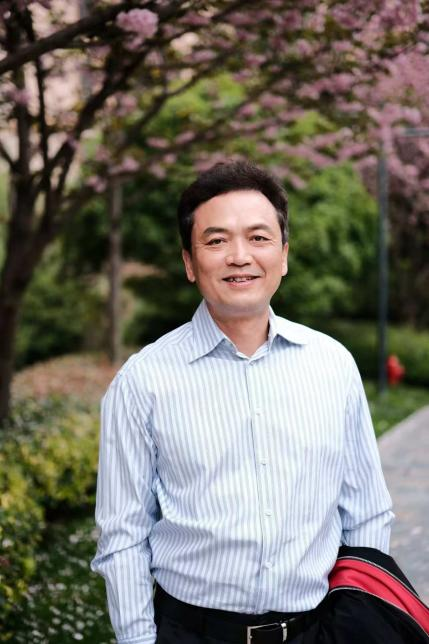Jin Zicai: This year, the A-share market will effectively rebound and improve, looking optimistically towards overseas expansion and high dividend directions.
2024-06-25 11:07
On Friday, June 21st, Jin Zicai, a fund manager at Caitong Fund, shared his market analysis and investment views at the Caitong Fund 2024 Summer Investment Strategy Conference.
On June 21st, Jin Zicai, a fund manager at Caitong Fund, shared his market judgment and investment views at the Caitong Fund 2024 Summer Investment Strategy Conference. Jin Zicai believes that the market is expected to heat up and move higher this year. In terms of allocation, going global is a very important lever in the growth direction. In terms of dividends, companies that combine cash flow and growth potential may benefit in the future. Especially, companies that are rare in the market now if they can combine cash flow and growth potential. If the market enters a new phase of warming and upward movement, core assets may change, as different macro environments will nurture different core assets. Currently, looking at the A-share market, investment opportunities with strong growth potential may mainly focus on various areas in going global.
Jin Zicai stated that the market volatility is expected to further decrease under the promotion of the national nine policies. This is because leading companies with ample cash flow, strong dividend capabilities, and good competitive landscape inherently have relatively low volatility. Currently, in the domestic market, there is a relatively divided consumption structure state, with a significant trend towards cost-effective consumption. E-commerce platforms representing cost-effective consumption are favored, while high unit price consumption is recovering relatively weakly. This is the current state of domestic consumption.
From an international perspective, after experiencing the destocking cycle last year, the European and American economies are currently in the initial stage of actively restocking.
It will continue to focus on the pull effect of subsequent restocking on exports. In fact, in the first and second quarters of this year, the export industry, especially machinery and light industry, has shown strong growth momentum, and some leading companies have achieved good growth.
In the second half of the year, as the United States gradually enters an interest rate reduction cycle, there are reasons to believe that this momentum will remain strong. In addition, the U.S. real estate market is also in the bottom range, and the year-on-year growth rate of new privately owned housing starts has rebounded since the second quarter of last year, showing an upward trend.
It is expected that this trend will continue. Therefore, a relatively optimistic attitude is held towards North American and overall external demand.
In this context, going global investment is an inevitable choice. Looking at Japan in the 1990s, we can see a similar environment. It is believed that through going global, domestic companies can effectively achieve profit growth.
Jin Zicai predicts that the market will effectively warm up and develop upwards this year.
From a macroeconomic perspective, domestic demand is still relatively low. It is believed that by expanding overseas markets, the profit growth of leading companies can be achieved. At the policy level, the nine policies are an important policy tool that helps to consolidate the market's foundation. It is expected that the market will effectively warm up and develop upwards this year.
In terms of allocation strategy, going global is a very important lever in the growth direction. In addition, dividends are also expected to benefit in the future. Especially, companies that can combine cash flow and growth potential, which are currently rare in the market. They have both growth potential and high dividend characteristics. Such companies are likely to be highly favored investment points in the market.
However, Jin Zicai mentioned that a higher dividend yield is not necessarily better, and a moderate level is preferable.
Since the beginning of this year, assets that combine growth and high dividends have performed significantly. When the expected growth rate of equity in 2024 is divided into 12 groups, the most significant excess return since the beginning of this year is in the 10% to 15% growth range, with an excess return of 21.6%, corresponding to a dividend yield of 2.8%. There may have been a misconception in the past that a higher dividend yield is better, or that higher growth is better. But in the current era, a high static dividend yield is not always the best choice.
In fact, companies with a moderate dividend yield and moderate growth rate may have better growth sustainability and future growth certainty. The performance of these companies this year has been relatively good, which is an important observation to share. High dividends and growth are not contradictory. Take the S&P, for example, many technology companies have a high return on buybacks and dividends. This shows that a high dividend strategy is not limited to traditional industries; it may also perform well in various industries.
Looking ahead to future investment directions, Jin Zicai pointed out that first is the going global strategy, followed by high dividend and dividend direction.
In terms of going global, during the economic recovery period after the COVID-19 outbreak in 2020, a large cycle was formed in the macroeconomics at home and abroad, and investing in the up cycle was a very good choice. However, if the market enters a new phase of warming and rising, core assets may change, as different macro environments will nurture different core assets.
Currently, looking at the A-share market, investment opportunities with strong growth potential may mainly focus on various areas in going global. Some core industries and varieties in the going global field in the future are likely to become the focus of market attention and layout in the next stage.
In the going global direction, Chinese companies' market share is not high in many industries globally. Recently, many Chinese brands, including new energy vehicles, buses, and other manufacturing sectors, are entering the European and American markets to gain market share.
In the high dividend field, the core factor is interest rates, whether short-term or long-term, they are in a long-term downward range. This makes the cost-effectiveness of dividend assets higher and more certain. This is why dividend investments started to gain more visibility from the second half of last year, and from the second half of last year until now, the recognition has been increasing.
When looking for high dividend assets, although it is easy to screen through some static data, companies with high static dividend yields are not always the best choice.
In conclusion, Jin Zicai stated that the national nine policies have solidified the market's bottom and led to market differentiation, with funds flowing to high-quality companies while withdrawing from companies that may have problems. This has also lowered market volatility and is conducive to the high-quality development of the market. He is very optimistic about the overall warming of the market in the near future.
In terms of investment directionLooking at the two areas of overseas expansion and high dividends, the former is the core stronghold of growth stocks, while the latter may be the core stronghold of value stocks. If we can combine the two, it may be a better investment choice.S, entiendo lo que ests diciendo.
RECOMMEND

Advanced investment education | FATCA & CRS leading global tax transparency, who is most affected?
04/08/2025

34 年股市老兵“曾阿牛”:跑赢纳指 110%仍不满足!从第一代股评家到对冲基金管理人的经历
14/06/2025

The first closed door meeting of the New Intelligence Roundtable Faction and the US Dollar Foundation was successfully held in Shanghai
01/05/2025
Customer Service

Add the WeCom

